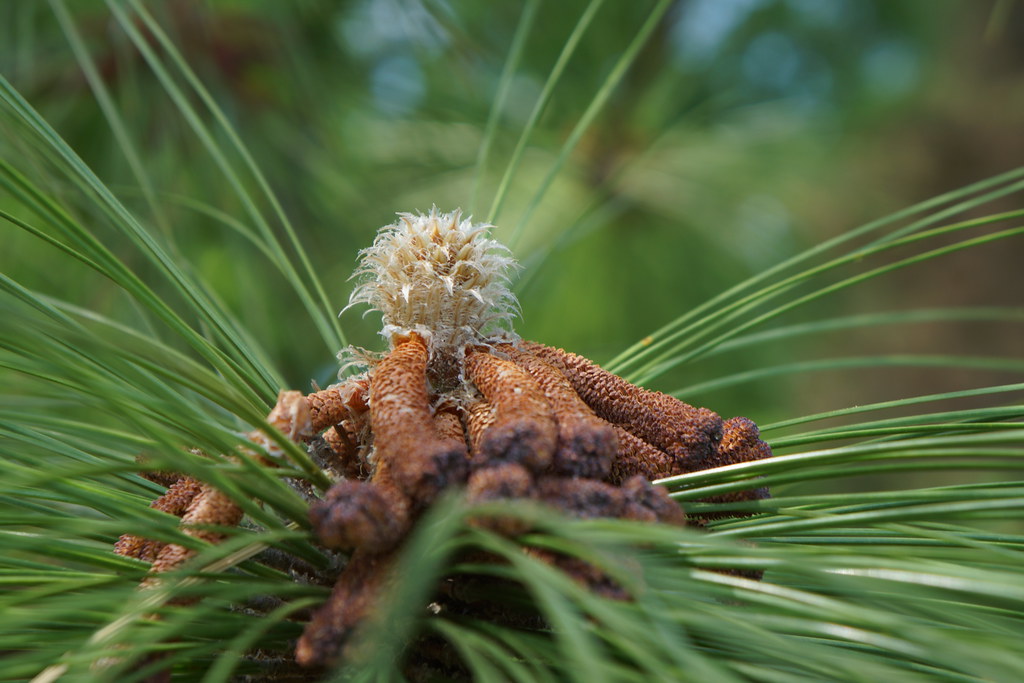
Pollen cone, Pinus palustris (longleaf pine)_ Pollen cone,… Flickr
A conifer cone or pinecone is a seed-bearing organ on gymnosperm plants. It is usually woody, ovoid to globular, including scales and bracts arranged around a central axis, especially in conifers and cycads. The cone of Pinophyta contains the reproductive structures. The woody cone is the female cone, which produces plants. The male cone, which produces pollen, is usually herbaceous and much.
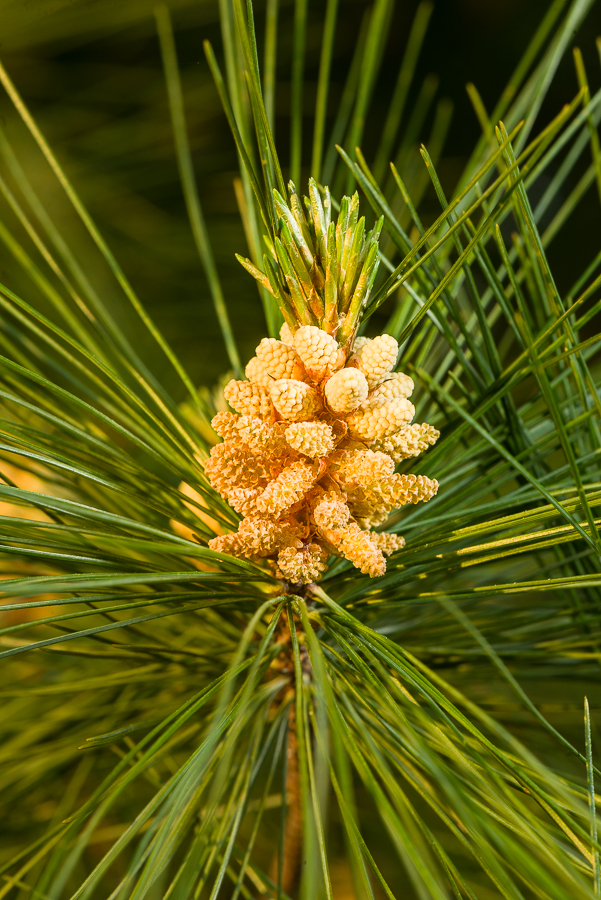
pine cone life cycle
Pollen bread with pine cone syrup is a celebration of arborphagy. Pollen=More texture than flavor, sometimes . Pine pollen has a mild flavor, and if you use it in something like pancakes or cookies, you're going to notice more of a subtle yellow color and gentle texture it adds than you will a defined pollen flavor. For a pronounced pollen.
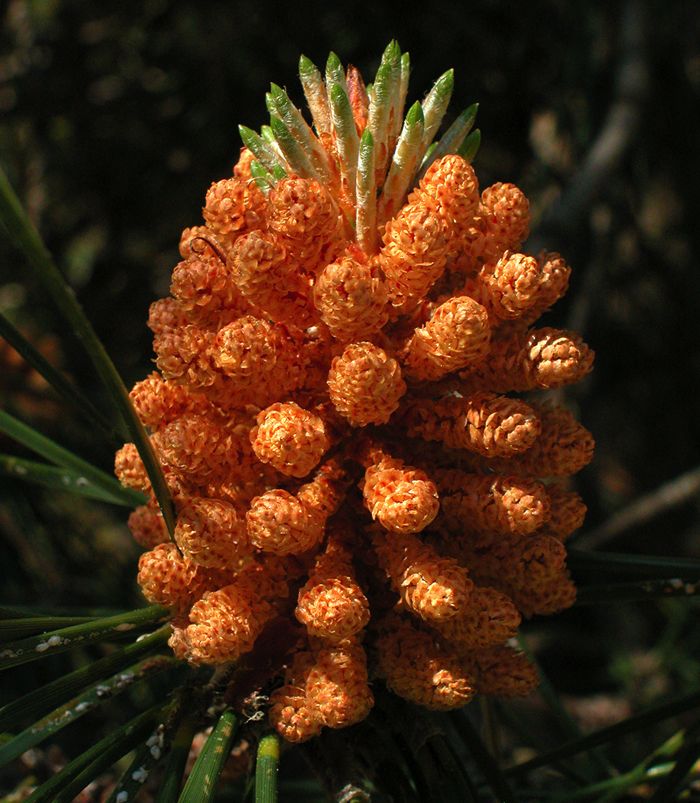
Pinus pinaster (pinheiro bravo) description The Gymnosperm Database
When the cone is new, and the tree has not yet put much energy into making it, the scales on the small cone open, and pollen which has been shed by other trees is carried by the wind [image below right, showing pine pollen being shed and dispersed/carried by the wind to the newest cones] to the small cones and enters through the slightly.

FilePinus edulis pollencones1.jpg Wikimedia Commons
The genus name, Pinus, is Latin for pine. The epithet, sylvestris, means from the woods and forests.. The male pollen cone is a rounded cylinder, measuring 3/8 to 1/2-inch long, and maybe yellowish-green to red. They appear in dense clusters at the base of the new stems or candles. The female is smaller, oval, 1/4 to 3/8-inch long, reddish.
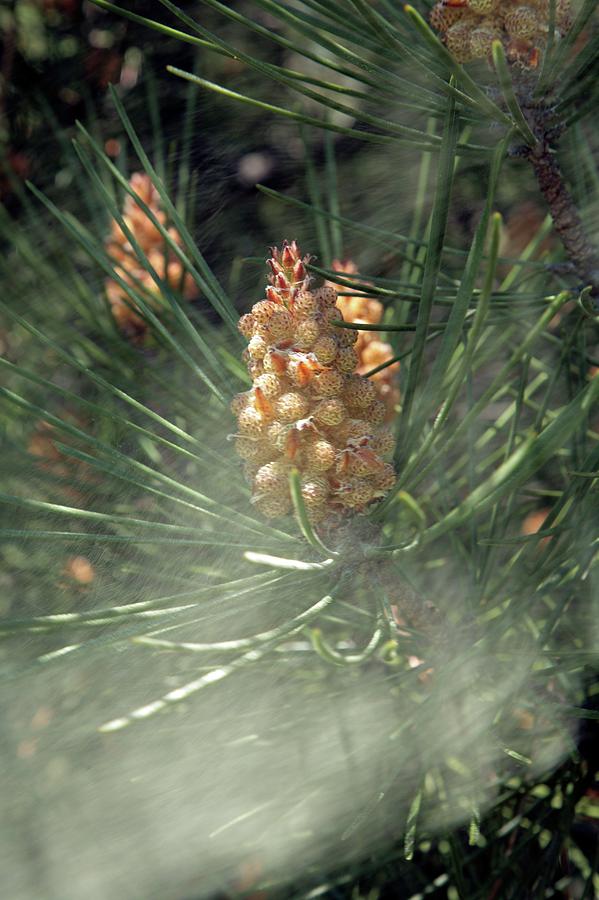
Pine Cone Pollen Release Photograph by David Taylor/science Photo Library Pixels
The pollen cones in most Pinus species are generally green, which then turn yellow and finally golden brown in colour upon dehiscence. The male cone has many microsporophylls attached spirally to a central axis. Pinus microsporophylls are short-stalked, scaly, membranous, and thin. A microsporophyll is typically compared with the stamen of an.
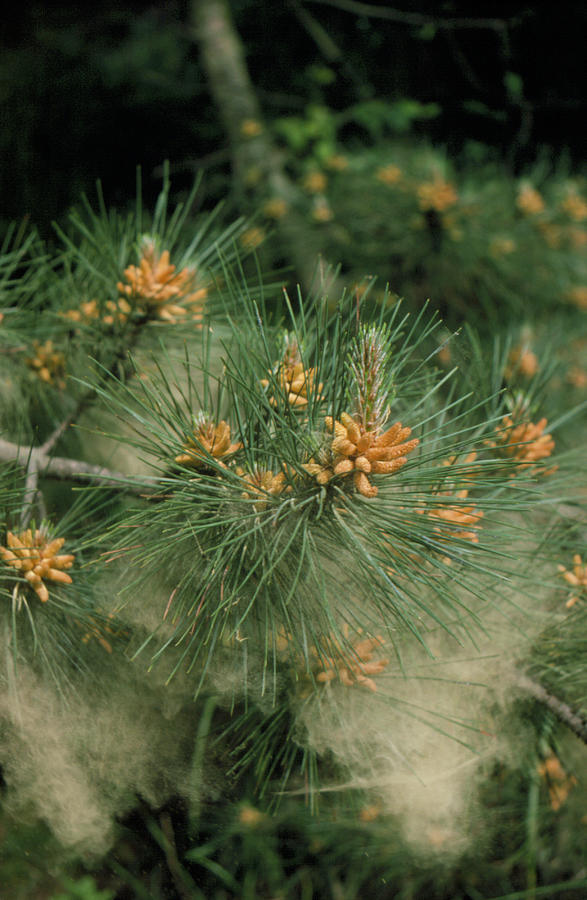
Pollen Dispersal From Male Pine Cones Photograph by Dr Jeremy Burgess/science Photo Library Pixels
Pine Pollen Powder Dosage. ½ to 1 teaspoon per day. About ½ to 1 gram. Megadose: 1 ½ tbsp to 3 tablespoons per day. 5 to 10 grams. How to Use Pine Pollen Powder - For a small dose, you can spoon the powder into your mouth then wash it down with any liquid. Be careful you don't inhale. Pine Pollen has a bitterness that some people don't like, but most will get used to in time.
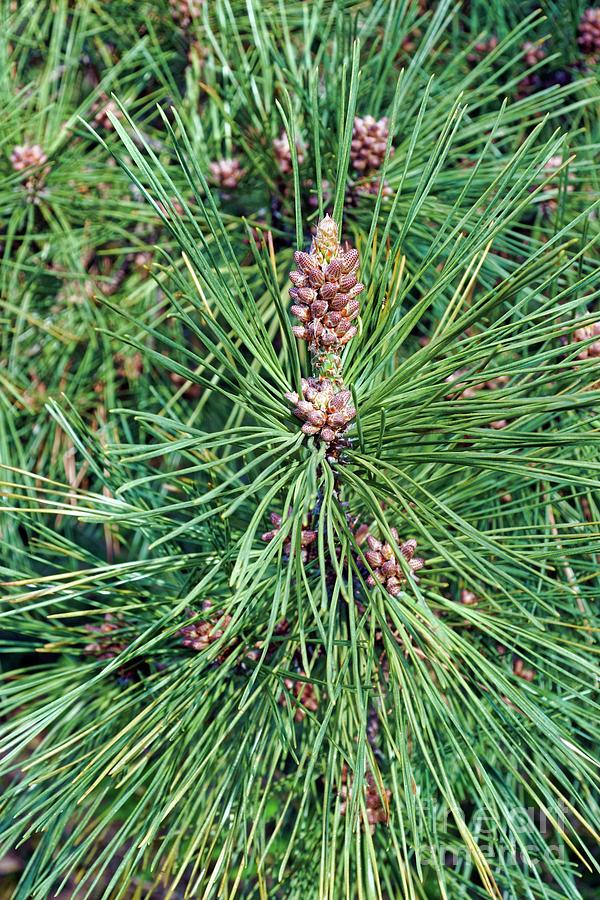
Ponderosa Pine (pinus Ponderosa) Pollen Cones Photograph by Dr. Nick Kurzenko/science Photo
A mature female Coulter pine (Pinus coulteri) cone, the heaviest pine cone Rocky Mountain Douglas-fir (Pseudotsuga menziesii var. glauca) young female cone Immature male or pollen cones of Rocky Mountain ponderosa pine.(Pinus ponderosa var. scopulorum)A conifer cone or pinecone (strobilus, pl.: strobili in formal botanical usage) is a seed-bearing organ on gymnosperm plants.

Strobili_(male)_Pinus_palustris_pollen_cone_Feb_ELM Master Gardeners of Northern Virginia
Pollen Cones Figure \(\PageIndex{8}\): Microstrobili on Pinus sylvestris. Unlike the woody seed cones, pollen cones are small, fragile, and ephemeral. Microgametophytes are formed within the microsporangia of the microstrobilus, or pollen cone. These structures are all diploid.

Loblolly pine pollen cones stock photo. Image of pinaceae 85334100
In the spring, large pines produce pollen cones. These are on the branches, right behind the new growth. They resemble little buttons or balls. There are no needles in this area. Out of these pollen cones comes pollen. If everything goes the way it should, pine cones will be produced later in the summer. For pines, especially white pines, this.

Pine Pollen Cones Photograph by Diane Zucker Fine Art America
Figure 2.6.2.2.10 2.6.2.2. 10: These series of micrographs shows male and female gymnosperm gametophytes. (a) This male cone, shown in cross section, has approximately 20 microsporophylls, each of which produces hundreds of male gametophytes (pollen grains). (b) Pollen grains are visible in this single microsporophyll.

Pinus radiata Monterey Pine Pollen cones of Monterey Pi… Flickr
Benefits and uses. Pine pollen has long been used for a variety of health-related purposes, such as: supplementing the diet or adding to foods. slowing aging. reducing fatigue. boosting.

Microstrobilus or Pollen Cone or Male Cone of Pine Tree Scots Pine Pinus Sylvestris in Spring
This species has both pollen cones and seed cones. The blueish-red pollen cones are a somewhat rounded shape (not perfectly round). The seed cones mature on trees after approximately 2 years and fall to the ground. Before opening, they are a cylindric shape, becoming a purple to brown colored egg-shaped with a triangular base after opening.
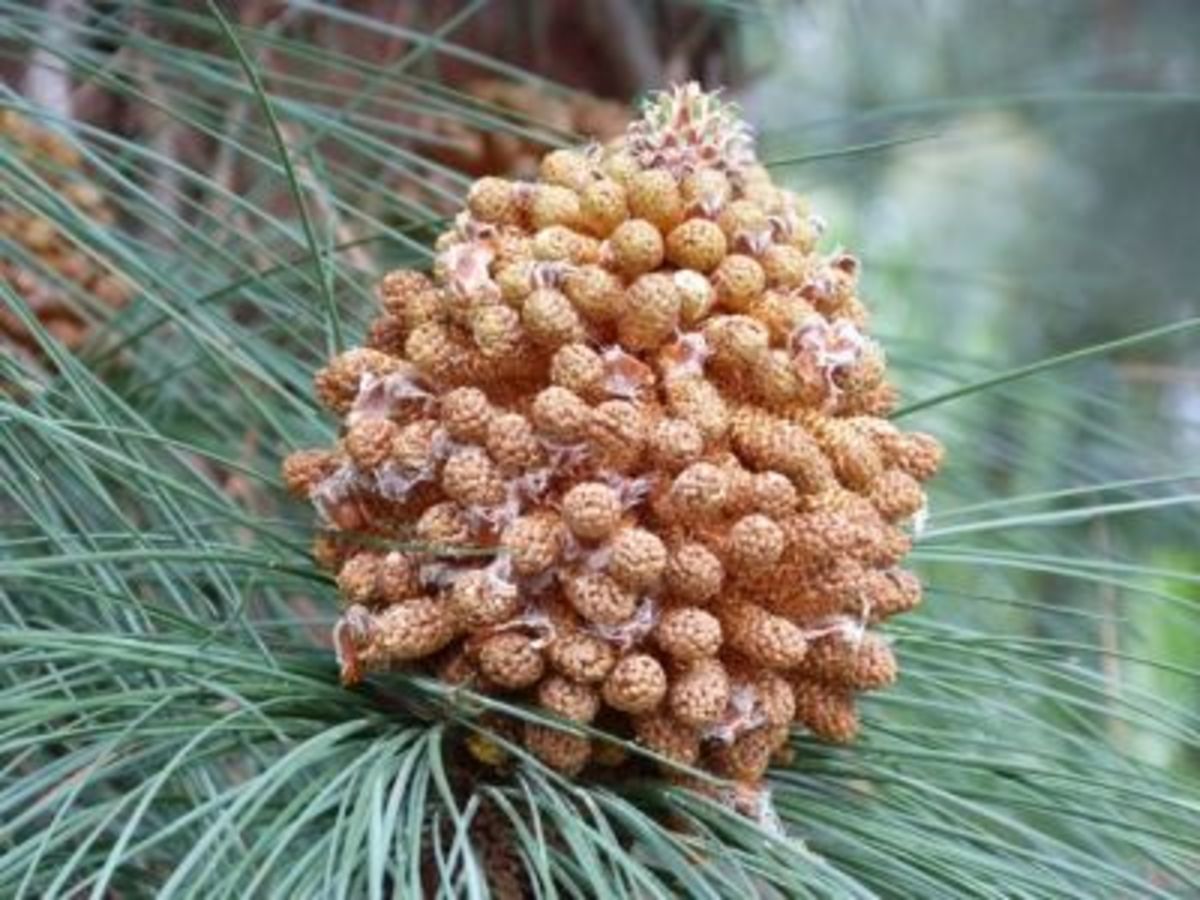
Pine Cone Fun Facts hubpages
Pollen cones on the lodgepole pine tree are tiny, cylindrical cones measuring 0.2" to 0.6" (5 - 15 mm) long. Other identifying features of lodgepole pines are gray or reddish-brown bark, yellow-green needles leaves, and black-winged seeds measuring 0.4" (1 cm) long. Bristlecone Pine Cone (Pinus longaeva)

Immature Male or Pollen Cone of Pine Tree . Conifer Cone Stock Photo Image of coniferous
I ntroduction. Pine pollen (Pinus pollen) is a Chinese herbal medicine, also known as "Songhuafen" or "Songhuang," being first recorded in the Tang Dynasty's Xin Xiu Ben Cao; it has been used in medicinal products and as a healthy food for thousands of years. []Pine pollen is a dry, fine, bright, or light yellow color powder. It is mainly derived from Pinus massoniana Lamb., from.

Microstrobilus or pollen cone or male cone of pine tree Scots pine Pinus sylvestris in spring
Figure 3. Whitebark pine pollen cones. Seed yield per cone Figure 4. Mature whitebark pine cones. Information about seed yields per cone is helpful when identifying the number of cones to collect and thus the amount of caging material needed. The number of seeds per cone is highly variable. The number of seeds and filled seeds (seeds in
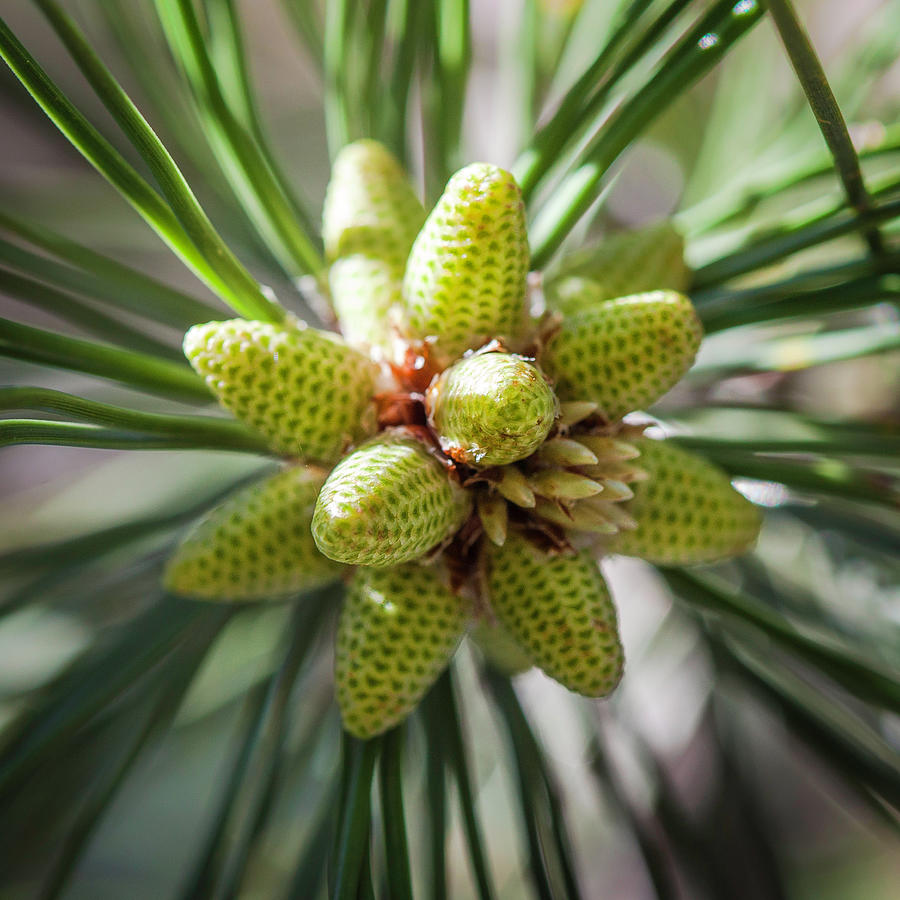
Ponderosa Pine Pollen Cone Macro Photograph by David M Porter Fine Art America
Pine pollen—the focus of this article—is a fine yellow powder produced by male pine cones during the reproductive process. Originating from various pine tree species, this natural substance has been highly valued in traditional medicine, particularly in East Asia, for its abundance of nutrients and health-promoting properties [1].